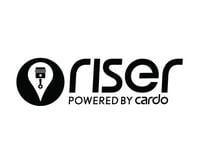A turbocharger boosts engine power by using exhaust energy to drive a pump that can double or triple the fuel-air mixture flowing into your engine’s cylinders. The approximate result will be double or triple that engine’s normal power.
In 2013, Suzuki showed its Recursion concept bike, and in 2015 gave details of a turbocharged, twin-cylinder XE7 engine displacing 588cc and credited with 100 hp at 8,000 rpm and 75 pound-feet of torque at a remarkably low 4,500 rpm.
A strong and continuing trend in automotive development today is the substitution of smaller-displacement turbocharged engines for larger non-turbo engines. This results from governmental regulatory pressure for reduced carbon release and lower fuel consumption.
These goals can best be met by smaller engines because: 1) A smaller engine suffers less mechanical friction loss (bearings, pistons, rings) than does a larger one, at the same power level; and 2) the smaller the engine is made, the wider its throttle must be opened to achieve the power for highway cruise, thereby reducing engine pumping loss.
This regulatory pressure does not at present exist for motorcycles, so we must consider other possible motivations for turbocharging their engines. Back in the early 1980s, even the word “turbo” produced excitement and was applied by marketers to even the most mundane things (such as tax-preparation software).
All of the Japanese Big Four had a go:
- 1978 Kawasaki Z1R-TC
- 1982 Honda CX500TC, Yamaha XJ650LJ Seca Turbo
- 1983 Honda CX650T, Suzuki XN85
- 1984 Kawasaki GPz750 Turbo
Unfortunately, two circumstances worked against the success of these bikes: 1) They were developed in haste and showed it, with often-weak off-turbo performance, torque lag, and not-so-hot rideability; and 2) just after turbo bikes hit the market, a new generation of much more refined and responsive medium- and high-power non-turbo sportbikes was released. It was no contest.
Very quickly, the era of turbo motorcycles had passed.
Turbocharging can greatly boost engine power, as in the case of the four-cylinder BMW Megatron turbocharged 1,500cc Formula 1 engine, which in 1986 was reputed to qualify at more than 1,000 hp and race at 900 hp. This implies the possibility of a 500cc motorcycle engine producing 300 hp, a possibility made even more believable when you consider the great advances in engine electronic controls that have taken place in the one-third of a century since then.
So why aren’t there compact, lightweight, and good-handling turbo bikes on the market now, able to blow over even the biggest-inch sportbikes with ease?
Part of the answer is the tricky nature of turbo engine torque. Racing cars, with 18-inch-wide tires, can handle quite a bit of sudden torque, but bikes, with tires only one-third that wide, of which only one-third is actually touching the pavement, cannot. Unless you are on a dragstrip that is shiny with tire glue, a powerful turbo engine is likely to break loose your bike’s back tire in a manner (in the middle of a corner, for example) you are unable to handle. The reason is that the manifold pressure from a turbocharger rises as the square of turbine/compressor rpm—exponentially, in other words.
Therefore, the major problem to be solved is how to give the rider of a turbo bike a torque-based throttle system that eliminates such unrideable surprises. That almost certainly means developing some means of accurately controlling turbo speed and output.
Torque lag results from the fact that as you cruise on part throttle, the turbocharger is spinning fairly slowly because exhaust volume is low. But when you signal that you want maximum torque, even the increased exhaust flow will take time to accelerate the turbo to a speed that delivers serious boost. How fast? A good rule of thumb is that impeller-tip speed must be close to 1,500 feet per second. For a 1-1/2-inch-diameter rotor, that’s 230,000 rpm. In present-day F1 racing, turbos are spun up by powerful electric motors, greatly reducing torque lag. Turbine inertia may be reduced by use of lightweight ceramic material.
A stock engine can be slightly boosted without requiring internal changes, but as more boost is required, the high stock compression ratio of 11:1 or 12:1 will result in detonation and engine damage. Therefore, the compression ratios of highly turbocharged engines are reduced, typically to a level of 8:1 or 9:1. That considerably reduces engine torque and response in around-town operation, resulting in less of what Soichiro Honda once called “super-fine drive feeling.”
Another problem: Turbo engine systems are bulky. Room must be found for the turbocharger itself, for its plumbing and heat insulation, and for a charge air cooler (compressing intake air through a turbocharger raises its temperature, which encourages detonation). For most efficient use of engine exhaust energy, the turbocharger must be mounted as close as possible to the exhaust ports. Then the output from the compressor must be routed to the charge air cooler, and from there to an intake air plenum (to keep a large volume of air available as the engine rapidly takes its cylinder-sized bites of it), and then to the engine intakes. If the charge air cooler is air to air, fresh air from somewhere must be routed into and out of it through fair-sized ducts. If the cooler is air to water, coolant from the engine must be piped through it. Careful thought is required for optimum packaging.
The above are examples of what is driving the Suzuki patents, some of which call for using frame members as pipes or ducts, and which propose placement of the exhaust catalytic converter directly on the outlet of the turbocharger turbine. Patent drawings do show the turbocharger in optimum position, directly below the engine’s exhaust ports on the front of the engine.
In describing the XE7 engine, Suzuki literature referred to “geometry turbocharger technology,” which suggests that the turbocharger is of the variable-geometry type. This probably means it employs vanes whose orifice area can be altered during operation to extract maximum effect from low exhaust flow during turbine acceleration. An example of the variable-orifice idea in action is a garden hose from which water is dribbling. Put your thumb over the end of the hose, however, and that dribble turns into a small high-speed jet.
Suzuki has considerable experience with automotive turbocharging, and its turbocharged M9000 C-Tec4 four-stroke parallel-twin snowmobile engine gives 177 hp from 1,056cc displacement (the non-turbo M5000 C-Tec4 version of this engine produces 125 hp or just 71 percent as much).











/cloudfront-us-east-1.images.arcpublishing.com/octane/SXU4COFZ6TUIIZTQE5NOJZ2QJ4.jpg)


/cloudfront-us-east-1.images.arcpublishing.com/octane/EJ6KZRGAYBCVXNL2PJXL37UVWQ.jpg)
/cloudfront-us-east-1.images.arcpublishing.com/octane/AAN4TI76M5H5JMUVEIGASWXBDU.jpg)
/cloudfront-us-east-1.images.arcpublishing.com/octane/P3RXD2UCPFF37CMB7CHPVKXORY.jpg)
/cloudfront-us-east-1.images.arcpublishing.com/octane/VZEG2EJI2RDFZNHLRZMU56MD3Q.jpg)
/cloudfront-us-east-1.images.arcpublishing.com/octane/GVJQO5FFOFBWNGODOBRB4FBAW4.jpg)
/cloudfront-us-east-1.images.arcpublishing.com/octane/BIVAK2SFIBDJJM25E7I5VU2FJE.jpg)
/cloudfront-us-east-1.images.arcpublishing.com/octane/CH5VX52UG5CFHOVH5A6UYEFWWA.jpg)
/cloudfront-us-east-1.images.arcpublishing.com/octane/ZVGJNGZRU5C33N7KN23BBFKSC4.jpg)


/cloudfront-us-east-1.images.arcpublishing.com/octane/CZ5OM3E43ZEXJHY7LCYXCHLIKI.jpg)
/cloudfront-us-east-1.images.arcpublishing.com/octane/DF5T4K5KPZFJXFCTGPYR77PKJM.jpg)
/cloudfront-us-east-1.images.arcpublishing.com/octane/RMCT2KVQBJHBZMRTSLOVPMOILU.jpg)

/cloudfront-us-east-1.images.arcpublishing.com/octane/K45KB2XHQVA65DX7VN4ZSMT2BI.jpg)
/cloudfront-us-east-1.images.arcpublishing.com/octane/FNHXQQ56BRD7TO4YIJ453PNG2M.jpg)
/cloudfront-us-east-1.images.arcpublishing.com/octane/OIKJC4JA3ZH7BMKUGWYKBIY5FA.jpg)
/cloudfront-us-east-1.images.arcpublishing.com/octane/MT2SAEWY6FDXFBYSLDE3AEFDTM.jpg)
/cloudfront-us-east-1.images.arcpublishing.com/octane/66UPKPYVURBPRCP5HXSN56MEMM.jpg)
/cloudfront-us-east-1.images.arcpublishing.com/octane/EOREGDSRKFDCRJC6K3EDVHBGCE.jpg)
/cloudfront-us-east-1.images.arcpublishing.com/octane/42RF63Q3LVCMBP3DGTWXFYSMOA.jpg)
/cloudfront-us-east-1.images.arcpublishing.com/octane/XNVY3EVWZFCEVPUGJGAN633LXE.jpg)